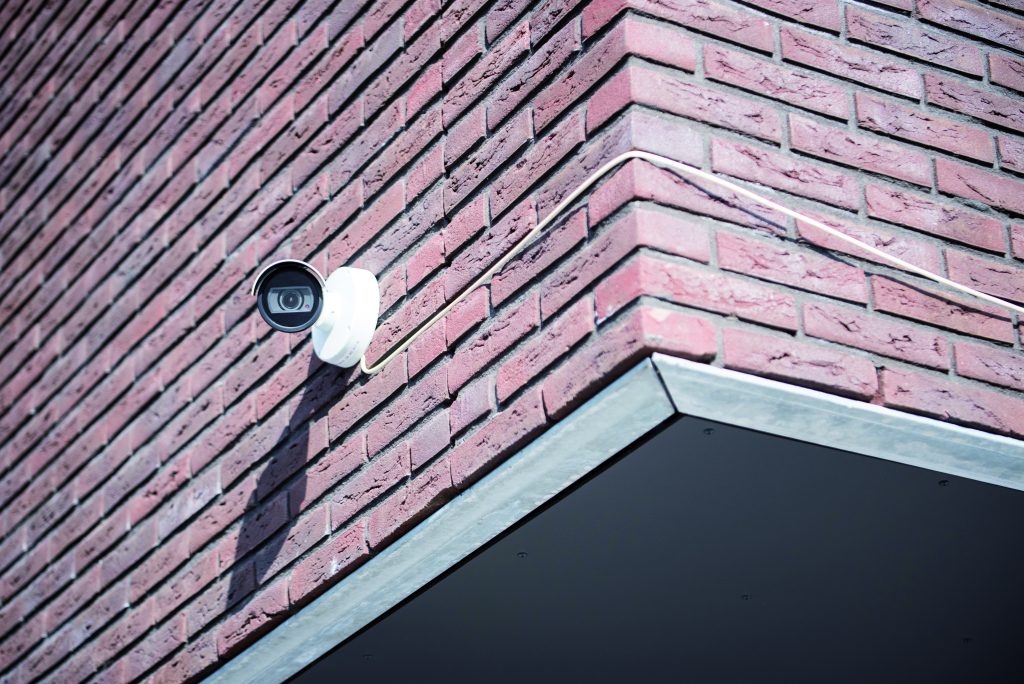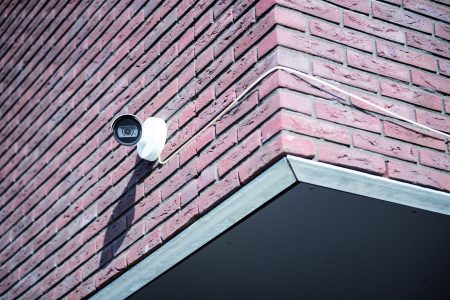
Three core considerations for the food and beverage production industry going into 2022
A proactive and timely response to any emergency where everyone plays their respective role is crucial.
March 1, 2022 | By Joe Morgan
 Photo provided by Axis Communications.
Photo provided by Axis Communications. 
Photo provided by Axis Communications.
It ensures a more controlled situation; one that allows for speedy recovery and mending or remodelling. The food and beverage industry has faced shortages from the disruption in production and distribution caused by labour shortages, catalyzed by the pandemic.
Early implementation of analytics alarming on breaches of pandemic protocols, such as social spacing, mask identification and elevated temperature monitoring, may have helped to slow the spread in process factories and distribution networks.
PLANNING FOR BUSINESS OPERATIONS CONTINUITY
Now, businesses are designing emergency response teams that are familiar with new emergency plan protocols, and their designated roles for addressing each possible situation. In the year ahead, we’ll see process being updated in production facilities such as barriers, partitioned zones and behavioural people monitoring to help curve the disruption caused by product shortages due to workforce insufficiency.
For continuity, distribution outlets will also increase storage capacities for key staple goods, i.e., milk, eggs, bacon, ground beef, and orange juice to compensate for spike shortages. Indeed, many will never forget the scene of empty shelves in the grocery stores for many of these products, which caused deep panic for everyone. Most of our society is conditioned to on-demand food, either at the store or at a restaurant. If supplies are not there for Canadian families, they have the potential to hoard a product when they do find it. This is what is known as insecure behaviour, and it attri- butes to the overall problem.
SURVEILLANCE SOLUTIONS PILLARS: PHYSICAL, PROCESS AND SAFETY
There are three core considerations/ three pillars that are essential for the industry to consider. Physical, process and safety adversely contribute to the supply chain in facilities producing food and beverage products. A deficiency in just one of these areas can disrupt the supply chain, thus creating shortages.
Physical security – Physical security is the most mature area in protecting industry and critical infrastructure from a physical intrusion standpoint. Solutions like perimeter protection, occupancy management, access control with layered situational awareness is well developed and an ideal solution. This is the first line for defence regarding physical risks of intrusion involving persons. A perimeter solution reinforces physical access controls to give industrial facili- ties an edge where security starts – at the perimeter of their site. Together with cameras, it provides an effective edge-based system that automatically detects and responds to people and vehicles intruding on the property. When combined with thermal and Pan-Tilt-Zoom (PTZ) cameras, it’s suitable even for high-security locations.
Occupancy estimators are a cost-effective and scalable video analytics application that collects real-time data on how many people are at a location. A pre-set occupancy threshold can also be set to trigger an alert to staff when met. You can also use occupancy data to strategically plan employee schedules, makes informed business decisions, improve site processes, and determine high traffic zones.
Consider low-touch access control and grant access with the scan of a QR code. This can help facilities unlock entrances with fewer touch points. It also allows approved site visitors to independently enter premises and move through accessible areas while allowing trace activity. Food and beverage can keep critical areas safe from unauthorized people and effectively grant access to secure areas.
Process security – With the push to automate, there’s more emphasis on remote monitoring of process. Optical and data sensors may be used in place of a maintenance worker, saving thousands in costs. With additional processing power embedded in the sensor, more on edge analytics can be utilized identifying potential problems in an early stage, preventing an unscheduled shutdown. Evaluation and intervention of critical machinery or processes early using sensors will decrease the risk of a shutdown costing money. A more reliable supply chain process, using advanced sensors and analytics, will reduce risk and cost.
Health and safety security – Health and safety has been monitored and regulated in critical factories for years from a fatality or severe injury standpoint. This ideology is now being used to monitor workers in their environment for safety procedures. An example is using IP speakers for notification when too many workers have congregated in an area that might have pandemic related restrictions on social distancing requirements. A camera detects people in an area, measures the distance between and counts the numbers, if the limits exceed, a prerecorded message from the audio speaker asks the people to ‘please space according to guidelines’.
Meat processing facilities are an example of where workers are in close quarters to each other, in a dynamic environment of constant moving and processing product. Surveillance solutions utilizing cameras with analytics that can detect critical problems in health and safety are being developed. Such analytics include PPE detection (mask, gloves, etc.), har- ness detection, proper shoe detection, and monitoring for items that should not be in restricted areas, such as cell phones. Also, monitoring equipment for potential problems early could prevent more severe results.
COMPONENTS AND MICROCHIP SHORTAGES
Our push for a global economy in the 80s and 90s was good in theory, but it has exposed holes in the global supply chain. The global model relies on a smooth supply chain and must have contingency plans in place to react to product spikes. It is truly dependent on all global areas operating effi- ciently. We have learned that country of origins for critical components
adversely affect many products. That said, there are thousands of new cars sitting in, holding lots at automotive factories, waiting for chips from China. This has caused a severe car/truck shortage, leading to disruption in the food and beverage distribution supply, limiting deliveries, and thus creating shortages. Surveillance providers are creating solutions using core competencies to help monitor and automate in manufacturing, operational efficiencies, and health safety. Optical material monitoring can now identify shortages. Smoke detection can now sound an alarm on a potential fire or hot spot developing. These types of abilities are examples of smart analytics coupled with exceptional optics that have advanced processing abilities.
Many surveillance technologies have now been developed and integrated for some unique, end-to-end solutions in food and beverage. Lower cost solutions are creating a tipping point for adaptation.
Companies are looking for solutions to address some of the problems they are encountering. Using AI and ML sensors to collect data for the bigger picture will facilitate the creation of emergency models and develop automated responses in a factory’s process. This smooths out the supply chain in production, thus minimizing risk associated with the human element.
Joe Morgan is the Segment Development Manager Critical Infrastructure for Axis Communications. He’s been working in industry and critical infrastructure for 34 years, developing optical solutions in security, process, and safety to make it a smarter safer world. Joe has a BA in Education from the University of Texas at Arlington.
